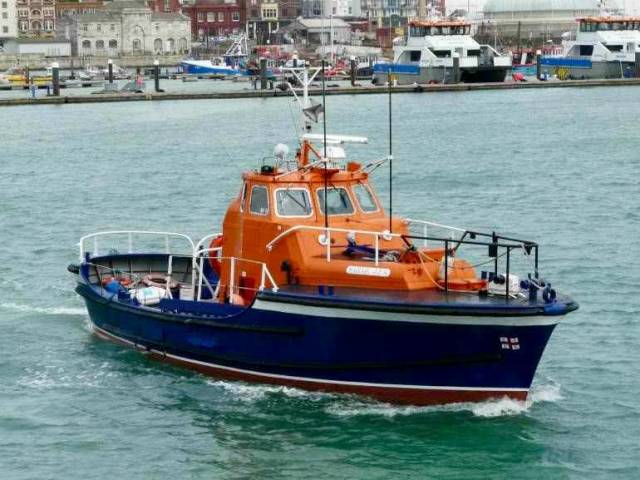#JohnFKennedy – A 50 year-old former Dun Laoghaire Harbour RNLI lifeboat which gave sterling service for more than two decades saving many lives, remains operating albeit in private ownership as a charter excursion boat, writes Jehan Ashmore.
The ‘Waveney’ class RNLB John F Kennedy built in 1966 at Lowestoft, was based at the Irish station until decommissioned in 1989. It was not until 1996 that the 44ft long Motor Lifeboat (MLB) was sold for the first time into private ownership on the Tyne, however her latest career is based on the English Channel.
Family run boat business, Bay Charters, according to Ships Monthly, have acquired the former lifeboat to run operations out of Sovereign Harbour, Eastbourne on the East Sussex coast. Named, Fortitude, the boat carries out charters for up to 12 passengers on fishing trips, diving to wreck sites and sightseeing excursions.
The Waveney class, Afloat adds are named after the River Waveney which flows into the North Sea at Great Yarmouth, however the origins are actually based from the design of the U.S. Coast Guard in which 110 were built.
The design drew considerable attention from overseas at the Ninth International Lifeboat Conference in Scotland in 1963. This led to the adoption of the class by the RNLI. Their first production-built Waveney class lifeboat was RNLB John F Kennedy, which was stationed at Dun Laoghaire from 1967.
In total, the RNLI had 22 such lifeboats in service in the UK and Ireland between 1964 until 1999.
The Waveney's were by the 1990's being superseded by faster boats, among them Dun Laoghaire’s current Trent class All Weather lifeboat (ALB) , RNLB Anna Livia, now in her 21st year of service. Also on station is a smaller D class inshore lifeboat craft (ILB) Realt Na Mara.
Many of the Waveney’s were sold for lifeboat services overseas notably in Australia and New Zealand. To read more on the RNLI, particularly the work of the Dun Laoghaire station, click here.
In 2015, the RNLI had the honour of bringing the first ‘Shannon’ class lifeboat home to Ireland. It was the first all-weather lifeboat class to be named in recognition of the contribution and bravery of the RNLI’s Irish volunteers, who have been saving lives in Ireland since 1826.
Last year the RNLI carried out 1,098 launches bringing 1,244 people to safety.
































































